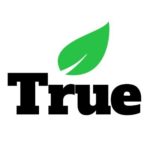As the old adage goes, a picture is worth a thousand words. For social media influencers, however, a picture or video can be worth thousands of dollars.
Social media influencing, driven primarily by sharing photo and video content across popular social media channels, represents a $1B USD industry with expectations of doubling in the next two years. Influencers need to seek out every advantage in order to survive in this growing yet infamously competitive marketplace. So how can social media influencers leverage technology in new ways to maximize the value of sharing media with their followers?
Below is a sample use case of how a social media influencer can leverage the power of Google Cloud APIs to bolster their existing media library. In this use case, it is important to remember to consolidate strategies into corresponding tool sets and try to keep them under one application as to not create disparate processes and data sets. One leading solution for this is the Synaptik framework, which will be discussed later in the post.
Tools: Google Cloud Video Intelligence API + Natural Language API
The Google Video Cloud Intelligence API allows users to, for a nominal fee, search every moment of every video file in a user’s catalog and find every occurrence as well as its significance. It quickly annotates videos stored in Google Cloud Storage, and helps users identify key noun entities of each video, as well as when they occur within the video.
The Google Cloud Natural Language API provides natural language understanding technologies to developers. Examples include sentiment analysis, entity recognition, entity sentiment analysis and text annotations.
Use Case: A fitness social media influencer wants to drive more insights from his collection of workout videos while better meeting the needs his current and potential followers.
Action Steps:
1.) Identification of nouns within video content. The influencer wants to make sure that videos are tracked by workout type. He uses the Google Cloud Video Intelligence API to identify noun keywords within each video including treadmill, kettlebell, barbell and bicycle.
2.) Organization of video content. The influencer is now able to take several action steps following noun identification. He chooses to crop videos showing certain activities to share daily on social media: one day highlighting kettlebells, another for a treadmill routine. Second, he makes his YouTube videos searchable by activity so his followers and visitors to his videos can easily find specific routines within larger workouts.
3.) Tracking of follower response. Using the Google Cloud Natural Language API, the influencer can also track the positive and negative sentiment of followers towards each social media posting. This allows him to drive his digital video content strategy to better serve his customers and ultimately continue to grow his social influence!
This work can seem daunting for a social media influencer, or really any small- to medium-sized business owner. However, Synaptik has the power to integrate Google Video Cloud Intelligence, Natural Language and dozens of other Google Cloud-based APIs into one easy-to-use, customizable platform. Sign up for a 30 minute consultation and we can show you what customers are saying about your products and services across multiple social media channels online (Facebook, Twitter, LinkedIn, etc.).
By Joe Sticca







